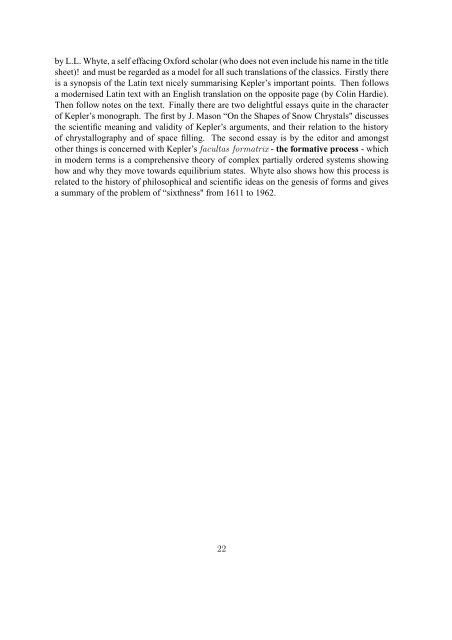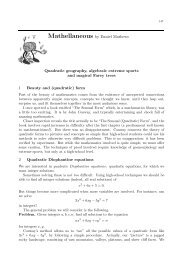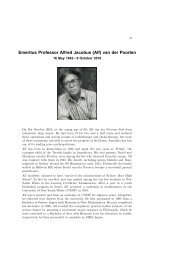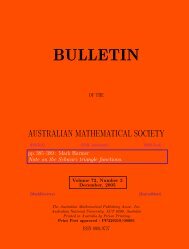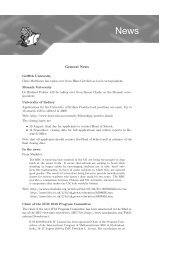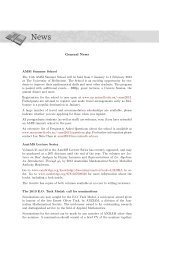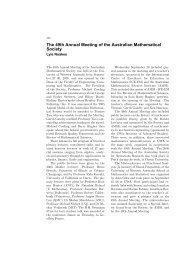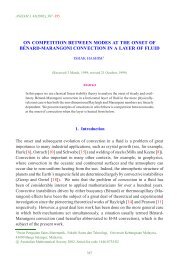FIBONACCI - HIS RABBITS AND HIS NUMBERS and KEPLER
FIBONACCI - HIS RABBITS AND HIS NUMBERS and KEPLER
FIBONACCI - HIS RABBITS AND HIS NUMBERS and KEPLER
You also want an ePaper? Increase the reach of your titles
YUMPU automatically turns print PDFs into web optimized ePapers that Google loves.
y L.L. Whyte, a self effacing Oxford scholar (who does not even include his name in the title<br />
sheet)! <strong>and</strong> must be regarded as a model for all such translations of the classics. Firstly there<br />
is a synopsis of the Latin text nicely summarising Kepler’s important points. Then follows<br />
a modernised Latin text with an English translation on the opposite page (by Colin Hardie).<br />
Then follow notes on the text. Finally there are two delightful essays quite in the character<br />
of Kepler’s monograph. The first by J. Mason “On the Shapes of Snow Chrystals" discusses<br />
the scientific meaning <strong>and</strong> validity of Kepler’s arguments, <strong>and</strong> their relation to the history<br />
of chrystallography <strong>and</strong> of space filling. The second essay is by the editor <strong>and</strong> amongst<br />
other things is concerned with Kepler’s facultas formatrix - the formative process -which<br />
in modern terms is a comprehensive theory of complex partially ordered systems showing<br />
how <strong>and</strong> why they move towards equilibrium states. Whyte also shows how this process is<br />
related to the history of philosophical <strong>and</strong> scientific ideas on the genesis of forms <strong>and</strong> gives<br />
a summary of the problem of “sixthness" from 1611 to 1962.<br />
22


